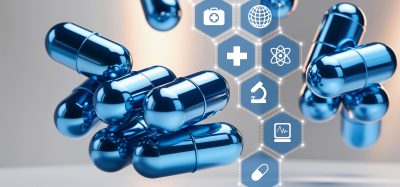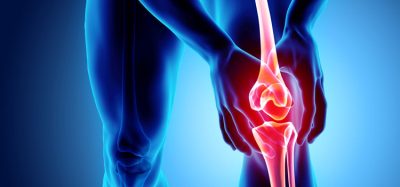The art and science of drug formulation
Posted: 9 August 2024 | Ningfeng Fiona Li (VasoDynamics) | No comments yet
Drug formulation is a cornerstone of modern medicine, turning raw active ingredients into consumable, effective therapies. This critical phase in drug development ensures that medications are safe, effective, and user-friendly. Here Ningfeng Fiona Li, founder and CEO of VasoDynamics, explores the world of drug formulation from its foundations to exploring the future potential of AI, 3D printing, personalised medicine and nanotechnology.


What is drug formulation?
Drug formulation is the process of designing and producing a final medicinal product from an active pharmaceutical ingredient (API). This involves combining the API with various excipients – non-active ingredients that enhance the drug’s stability, solubility, bioavailability and generally enhance the API’s ability to interact with the pharmacological target.1 The goal is to create a dosage form that delivers the drug effectively to the intended site of action with optimal patient benefit and a good commercial value.
When designing a drug, it is important to take all these factors into account. Should your drug be in tablet or capsule form? This is one of the most common formulations due to its ease of use and controlled release into the bloodstream. On the other hand, choosing an injectable formulation is ideal for rapid delivery, as the compound is delivered directly into the bloodstream to be distributed to the whole body. For other compounds, it can be beneficial to target the drug more precisely to the affected area. Inhalers are useful in respiratory conditions, whereas topical treatments can be applied directly to the skin for localised treatment.
The science behind drug formulation
The formulation of a drug is both an art and a science, requiring a deep understanding of the drug’s chemical and physical properties. Knowing and formulating the drug’s solubility, stability and particle size through design and addition of excipients is a continuous process throughout drug development. It continues from drug candidate screening and selection, prototype generation, preclinical validation, early clinical studies, to later clinical studies and post-market monitoring.
Creating an optimal formulation involves many stages, starting with pre-formulation studies to investigate the API’s characteristics. What is the API’s solubility? How is the drug absorbed into the body and how is this affected by its stability? Is the API still effective in the time it takes to reach the target area? How does the particle size influence the drug’s dissolution rate and bioavailability?
The next stage is compatibility testing, a broad range of studies that check whether the excipients interact adversely with the APIs and demonstrate that the API retains its physical, chemical and biological properties without negatively affecting the safety, efficacy and performance of the drug. At this stage additional information on the drugs’ stability profile and metabolic degradation products is collected to determine if the drug-excipient combination is compatible and functional.1
Excipients are non-active ingredients that play a vital role in modulating the solubility and bioavailability of APIs, increasing the stability of the compound and generally enhancing the API’s ability to interact with the pharmacological target2. Examples of these excipients include:
- Binders that hold the tablet together for the mechanical durability for mass productions and transport
- Fillers that add bulk when the active dose is too small to be handled
- Disintegrants that assist tablet break down in the digestive tract to become bioavailable and readily absorbed
- Preservatives that extend a products shelf by slowing down or stopping the degradation process and protect it against microbial contamination.
Recent advances in formulation technology have brought more attention to multifunctional excipients. The addition and combination of these multifunctional excipients to APIs have the ability to change the pharmaceutical features and function of the API, such as supporting the conversion of a pro-drug into a functional drug under certain in vivo conditions.1
Challenges in drug formulation
Developing a successful drug formulation is fraught with challenges. Drug development is a long and expensive process; bringing a typical new drug to market from discovery through clinical trials to approval can cost billions of dollars. Assessing and addressing challenges in drug formulation can happen throughout this process and may enhance these innovative medicines, but incorrect formulation could also have serious consequences.
Creating a stable compound can be a critical hurdle in drug formulation and being able to address stability issues with the right formulation is important. APIs can degrade over time affecting potency of a drug. For marketability and safety, a drug’s formulation has to be durable and able to withstand external pressures as changes in physical form can impact effectiveness.3
Another challenge is addressing bioavailability concerns. Oral drugs must dissolve and be absorbed in the gastrointestinal tract, known as absorption variability, which is influenced by numerous factors. Some drugs are significantly metabolised before reaching systemic circulation and its intended target, known as first pass metabolism, reducing efficacy.3 One possible solution to this is topical formulation, solutions or semisolid formulations like gels, creams and ointments, that are applied externally to the affected area.3
Patient compliance is a critical but complex challenge, with contributing factors reaching beyond just drug formulation. But there are considerations that can be taken in drug formulation to improve patient compliance and therefore lead to better health outcomes. Complex or inconvenient dose regimens and delivery can lead to poor adherence. Ideally medications should be formulated to require less frequent dosing, such as once a day, and use patient-friendly delivery methods. Especially important in paediatric and geriatric populations is considering the taste and palatability of oral medication. For example, oral disintegrating tablets (ODTs), have been shown to enhance patient compliance for those who struggle with swallowing pills.4
Overcoming common side effects through formulation
Addressing such challenges, especially in complex patients who may already be undergoing treatment with debilitating and painful side effects, has the potential to improve outcomes and reduce timelines, lowering ongoing care demands and the associated cost burden for treatment providers.
For patients suffering with oral mucositis, hand and foot syndrome, radiation induced dermatitis or chemotherapy induced alopecia, some of the most common side effects of cancer treatment5, VasoDynamics is developing a technology platform to generate topical formulations that protect skin, mucosa and scalp by directly targeting the affected area.
Developing the correct formulation for these treatments will be key to ensure they are effective. Using a topical approach enables the patient to apply the treatment themselves, making them easy to use, increasing treatment autonomy, enhancing patient compliance and improving the cost-benefit profile. It will also minimise systemic exposure and any associated side-effects or drug-drug interactions. This is an example of how integrating formulation development in the drug development pathway can enable the delivery of more effective treatments for patients – the fundamental goal of anyone working in the field.
Innovative approaches in drug formulation
Researchers are developing novel approaches to drug formulation. Nanotechnology promises an exciting new option to tackle bioavailability and delivery challenges. Nanocarriers are being developed to deliver drugs directly to specific cells or tissues. Site specificity provides a major therapeutic benefit, especially for use in chemotherapy, as it can decrease the adverse toxicity to healthy cells. The nanocarriers also facilitate passage through biological barriers, delivering the API directly to the site of action and ensuring it reaches its destination effectively.6
On a larger scale, advanced drug delivery systems are already offering more targeted, effective and convenient therapies. Controlled release systems, such as transdermal patches, offer steady absorption benefiting patients receiving medications that require frequent dosing to maintain therapeutic levels, reducing side effects and improving patient compliance.7
Exciting developments are also coming through the study of personalised medicine and being applied to drug formulation. Tailored therapies, with formulations based on an individual’s unique profile, promise to optimise treatment efficacy and minimise side effects by targeting specific variations that influence a drug’s response. Furthermore, adaptive dosage forms are being developed to allow for customisation based on patient needs, such as weight or metabolism.8
Future trends in drug formulation
The future of drug formulation is poised to be transformative, driven by emerging technologies and changing regulatory landscapes. Some attractive technologies include artificial intelligence (AI) and 3D printing. Emerging AI technology has already shown potential in drug discovery and drug synthesis, with applications in predicting formulation outcomes and optimising processes also being developed. 3D printing in drug development is still in its early stages but is also showing promise. Processes including creation of complex drug delivery systems tailored to individual patient needs, on-demand manufacturing of medications at delivery sites and the creation of complex drug structures with varying controlled release profiles are being explored by scientists.
Alongside technological advancements, there are significant regulatory considerations that need to be addressed as the sector moves forward. While current and future innovations in drug development hold immense promise, there are potential dangers that have not yet been accounted for in regulatory standards. Global efforts to standardise regulations could streamline development processes and eventually improve the likelihood of drug development success.
The impact of formulation
Drug formulation is a dynamic and vital field in pharmaceutical development, especially in the development of repurposed and repositioned drugs, combining scientific rigour with innovative approaches to create new, effective and safe medications. Optimal drug formulation has a pronounced impact on healthcare and drug development. In particular, it is reflected in enhanced efficacy and safety, and improved formulations lead to better patient outcomes. Efficient formulation processes can reduce development costs and time to market.
As technology advances and our understanding of drug properties deepens, the future of drug formulation promises even more breakthroughs, ultimately leading to better healthcare products and outcomes. The continued evolution of this field will undoubtedly play a pivotal role in the development of new and improved therapies for the benefit of patients worldwide.
References
- Allen, L. V., Jr., Popovich, N. G., & Ansel, H. C. (2010). Ansel’s Pharmaceutical Dosage Forms and Drug Delivery Systems (9th ed.). Lippincott Williams & Wilkins.
- Van der Merwe J, Steenekamp J, Steyn D, Hamman J. The Role of Functional Excipients in Solid Oral Dosage Forms to Overcome Poor Drug Dissolution and Bioavailability. Pharmaceutics. 2020 Apr 25;12(5):393. doi: 10.3390/pharmaceutics12050393. PMID: 32344802; PMCID: PMC7284856.
- Adepu S, Ramakrishna S. Controlled Drug Delivery Systems: Current Status and Future Directions. Molecules. 2021;26(19):5905. Published 2021 Sep 29. doi:10.3390/molecules26195905
- Baryakova, T.H., Pogostin, B.H., Langer, R. et al. Overcoming barriers to patient adherence: the case for developing innovative drug delivery systems. Nat Rev Drug Discov 22, 387–409 (2023). https://doi.org/10.1038/s41573-023-00670-0
- Peterson DE, Boers-Doets CB, Bensadoun RJ, Herrstedt J; ESMO Guidelines Committee. Management of oral and gastrointestinal mucosal injury: ESMO Clinical Practice Guidelines for diagnosis, treatment, and follow-up. Ann Oncol. 2015 Sep;26 Suppl 5:v139-51. doi: 10.1093/annonc/mdv202. Epub 2015 Jul 4. PMID: 26142468.
- Mitchell, M.J., Billingsley, M.M., Haley, R.M. et al. Engineering precision nanoparticles for drug delivery. Nat Rev Drug Discov 20, 101–124 (2021). https://doi.org/10.1038/s41573-020-0090-8
- Ezike TC, Okpala US, Onoja UL, et al. Advances in drug delivery systems, challenges and future directions. Heliyon. 2023;9(6):e17488. Published 2023 Jun 24. https://doi:10.1016/j.heliyon.2023.e17488
- Goetz LH, Schork NJ. Personalized medicine: motivation, challenges, and progress. Fertil Steril. 2018;109(6):952-963. https://doi:10.1016/j.fertnstert.2018.05.006
About the author
Ningfeng Fiona Li, founder and CEO of VasoDynamics


Related topics
3D printing, Artificial Intelligence, Drug Development, Nanotechnology, Personalised Medicine
Related organisations
VasoDynamics
Related people
Ningfeng Fiona Li (VasoDynamics)








